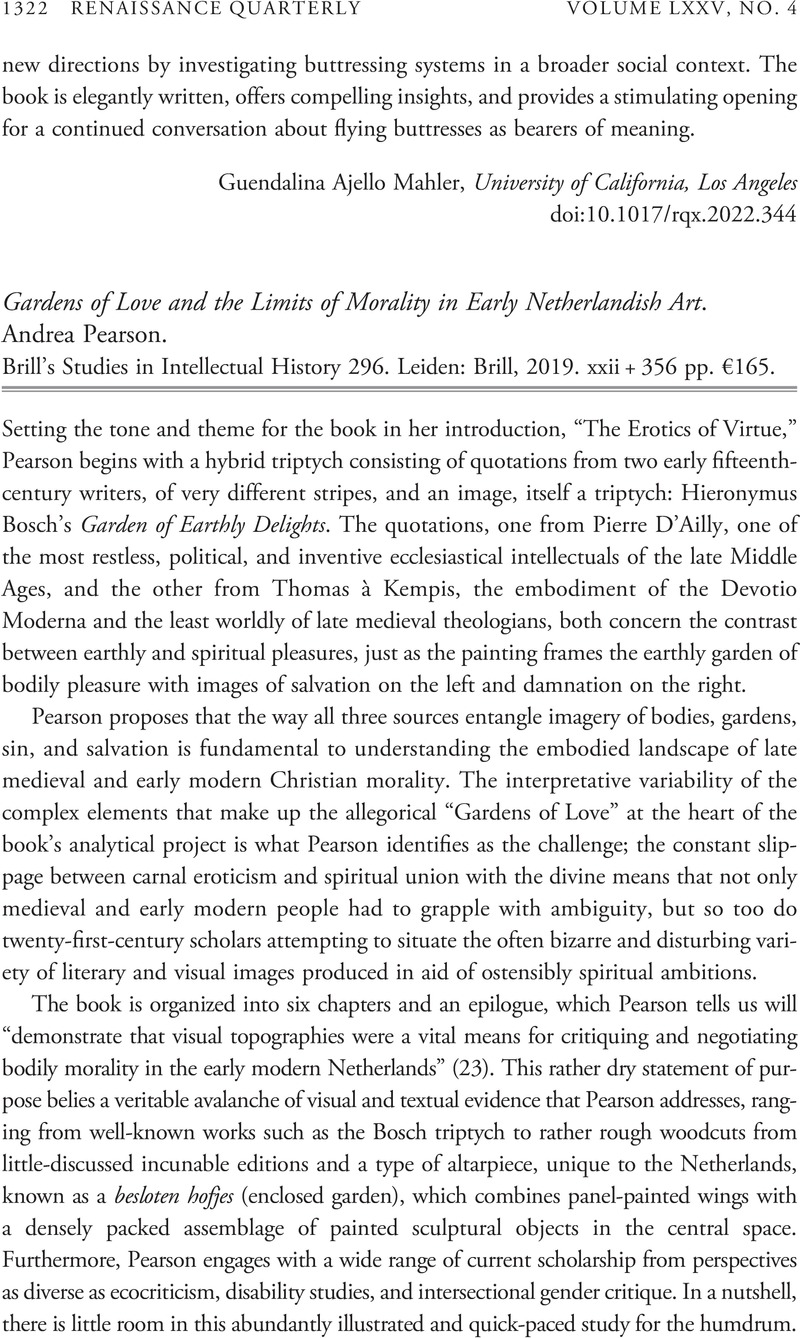No CrossRef data available.
Article contents
Gardens of Love and the Limits of Morality in Early Netherlandish Art. Andrea Pearson. Brill's Studies in Intellectual History 296. Leiden: Brill, 2019. xxii + 356 pp. €165.
Review products
Gardens of Love and the Limits of Morality in Early Netherlandish Art. Andrea Pearson. Brill's Studies in Intellectual History 296. Leiden: Brill, 2019. xxii + 356 pp. €165.
Published online by Cambridge University Press: 09 January 2023
Abstract
An abstract is not available for this content so a preview has been provided. Please use the Get access link above for information on how to access this content.

- Type
- Review
- Information
- Copyright
- Copyright © The Author(s), 2022. Published by the Renaissance Society of America



